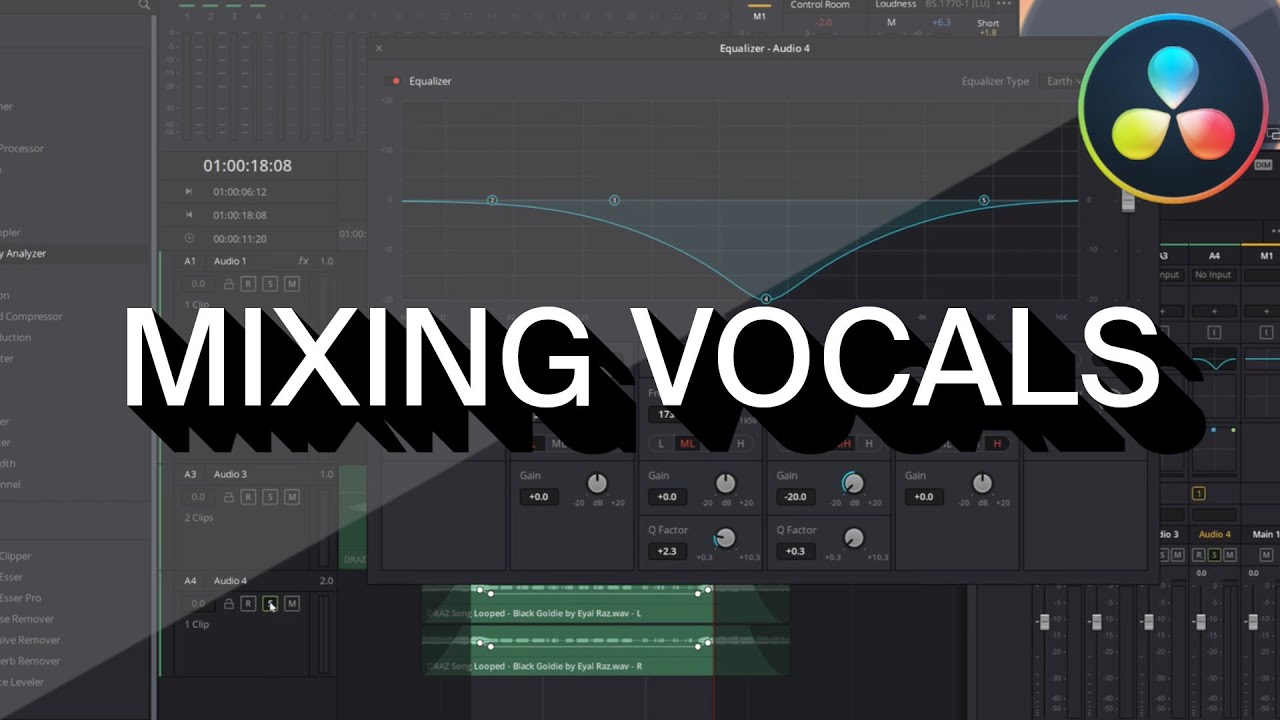Mastering the Sonic Canvas: A Comprehensive Guide to Mixing Audio in DaVinci Resolve

Introduction:
Mixing audio is an art form that plays a crucial role in creating a captivating and immersive audiovisual experience. In the realm of video editing, audio mixing involves blending various audio elements—dialogue, music, sound effects, and ambience—into a cohesive and balanced soundtrack that enhances the storytelling and emotional impact of the visuals. DaVinci Resolve, with its robust Fairlight audio editor, offers a comprehensive set of tools and features for mixing audio with precision and creativity. In this extensive guide, we’ll delve into the intricacies of mixing audio in DaVinci Resolve, providing you with the knowledge and techniques to master this essential skill and elevate the audio quality of your video projects to new heights.
Understanding Audio Mixing:
Before we delve into the specifics of mixing audio in DaVinci Resolve, let’s take a moment to understand what audio mixing is and why it’s important.
- What is Audio Mixing?
- Audio mixing is the process of blending multiple audio tracks together to create a cohesive and balanced soundtrack. This involves adjusting various parameters such as volume, pan, EQ, dynamics, effects, and spatialization to achieve the desired sonic balance and artistic vision. Audio mixing is essential for enhancing the clarity, depth, and emotional impact of the audio, creating a seamless integration with the visuals and elevating the overall quality of the project.
- Why is Audio Mixing Important?
- Audio mixing plays a crucial role in shaping the viewer’s perception and emotional response to a video. A well-mixed soundtrack enhances the storytelling, heightens the drama, and immerses the audience in the narrative world of the film or video. By balancing the levels of dialogue, music, and sound effects, smoothing out transitions, and adding creative touches and effects, audio mixing enhances the overall viewing experience and ensures that the audio complements and enhances the visuals.
Now that we have a basic understanding of what audio mixing is and why it’s important, let’s explore how to mix audio in DaVinci Resolve.
Mixing Audio in DaVinci Resolve:
DaVinci Resolve offers a comprehensive set of tools and features for mixing audio, providing users with precise control over every aspect of their audio tracks. Let’s explore the step-by-step process of mixing audio in DaVinci Resolve:
- Organizing Your Tracks:
- Before you start mixing, it’s essential to organize your audio tracks in the timeline. Arrange your tracks logically, grouping related elements together and labeling them appropriately. This will make it easier to navigate and edit your audio mix and ensure that you can quickly find and adjust the desired elements.
- Setting Levels:
- Start by setting the levels of your audio tracks to ensure that they blend together seamlessly. Use the volume faders in the mixer panel to adjust the overall level of each track, balancing the dialogue, music, sound effects, and ambience to achieve the desired sonic balance. Aim for a consistent level across all tracks, avoiding any drastic jumps or drops in volume that may distract or disorient the viewer.
- Panning and Spatialization:
- Once you’ve set the levels, consider the spatialization of your audio tracks within the stereo field. Use the pan controls in the mixer panel to position each track within the stereo image, creating a sense of depth and space in the audio mix. Experiment with panning dialogue to match the on-screen action, placing music and sound effects to enhance the immersive experience, and adding ambience to create a sense of environment and atmosphere.
- Equalization (EQ):
- EQ is a powerful tool for shaping the tonal balance and character of your audio tracks. Use the EQ controls in the mixer panel to adjust the frequency response of each track, boosting or cutting specific frequencies to enhance clarity, warmth, and presence. For dialogue, focus on enhancing the intelligibility and naturalness of the voice, while for music and sound effects, focus on sculpting the tonal balance and adding depth and dimension to the sound.
- Dynamics Processing:
- Dynamics processing is essential for controlling the dynamic range and consistency of your audio tracks. Use dynamics processors such as compressors, limiters, and expanders to smooth out peaks and valleys in the audio, ensuring that it remains balanced and controlled throughout. Apply gentle compression to dialogue to even out volume fluctuations and make it more intelligible, while using more aggressive compression on music and sound effects to enhance impact and clarity.
- Effects and Processing:
- Effects and processing can add depth, texture, and character to your audio tracks, enhancing the overall sonic experience. Experiment with reverb, delay, modulation, and other effects to create spatial effects, ambience, and atmosphere in your audio mix. Use effects sparingly and tastefully, applying them to enhance the storytelling and emotional impact of the visuals without overpowering or distracting from the content.
- Automation:
- Automation is the final step in the mixing process, allowing you to dynamically control various parameters of your audio tracks over time. Use automation to create fades, transitions, and effects that evolve and change with the flow of the video. Automate volume, pan, EQ, effects, and other parameters to enhance the dynamics, emotion, and impact of your audio mix, ensuring that it evolves and adapts to the narrative and pacing of the visuals.
Best Practices for Mixing Audio in DaVinci Resolve:
To achieve optimal results when mixing audio in DaVinci Resolve, consider the following best practices:
- Reference Material:
- Use reference material such as professionally produced films, videos, and music tracks to guide your decisions when mixing audio. Compare the sound of your project with reference material to ensure that it meets industry standards and sounds natural and balanced. Pay attention to the tonal balance, dynamics, spatialization, and effects in the reference material, and strive to match or exceed its quality and impact in your own mix.
- Monitor Your Levels:
- Monitor your audio levels throughout the mixing process to ensure that they remain within an optimal range and avoid clipping or distortion. Keep an eye on the peak meters, RMS meters, and spectrograms in the mixer panel to track the amplitude, peak levels, and dynamics of audio signals in real-time, and make adjustments as needed to maintain balanced and clear audio levels.
- Listen on Different Playback Systems:
- Listen to your audio mix on different playback systems, such as speakers, headphones, and monitors, to ensure that it sounds balanced and cohesive across various devices and environments. Make adjustments as needed to optimize the mix for different playback scenarios and ensure a consistent listening experience for your audience.
- Take Breaks and Rest Your Ears:
- Mixing audio can be a time-consuming and mentally taxing process, so it’s essential to take breaks and rest your ears regularly to avoid fatigue and maintain focus. Step away from the project periodically, give your ears a chance to rest and reset, and return with fresh perspective and clarity. This will help you make more informed and objective decisions when mixing audio and ensure that your final mix sounds polished and professional.
Conclusion:
Mixing audio is an art form that requires skill, creativity, and attention to detail. In DaVinci Resolve, with its powerful Fairlight audio editor, users have access to a comprehensive set of tools and features for mixing audio with precision and creativity. By understanding the principles of audio mixing, mastering the various techniques and tools available in DaVinci Resolve, and following best practices for implementation, you can elevate the audio quality of your video projects and create dynamic and immersive soundscapes that captivate and engage your audience. Experiment with different techniques, explore creative possibilities, and let your creativity shine as you master the art of mixing audio in DaVinci Resolve.







